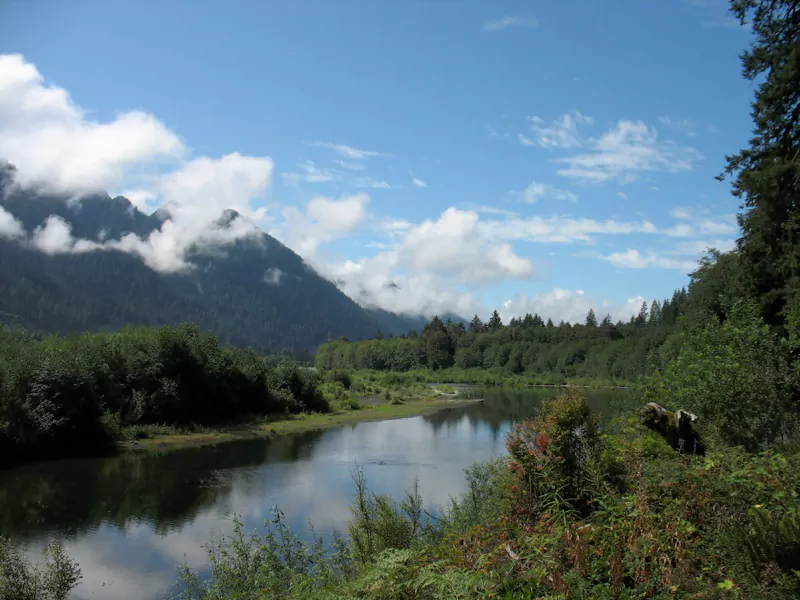Image Source: pxhere.com
These unique and resilient ecosystems have long captured the curiosity of scientists, environmentalists, and nature enthusiasts alike. From their striking appearance to their vital role in supporting a diverse range of species, mangroves truly are nature’s hidden gems. Join us as we dive into the fascinating realm of mangroves and uncover why they play such a critical role in maintaining ecosystems worldwide.
Table of Contents
What are mangroves?
Mangroves are unique and fascinating ecosystems that thrive in coastal areas around the world. These incredible plants have adapted to live in a challenging environment where saltwater meets freshwater, creating a dynamic and ever-changing habitat.
One defining characteristic of mangroves is their ability to tolerate high levels of salinity. Their roots are specially designed to filter out salt from the water they absorb, allowing them to survive in environments where most other plant species would perish.
Another remarkable feature of mangroves is their role as natural buffers against erosion and storm damage. The intricate network of roots that extend above and below the water’s surface helps stabilize shorelines, preventing soil erosion caused by waves and tides.
Additionally, mangroves provide essential nursery habitats for various marine species. The tangled root systems create a safe haven for young fish, crustaceans, and other organisms seeking shelter from predators. These nurseries support biodiversity by ensuring healthy populations of marine life in coastal waters.
Moreover, mangrove forests act as carbon sinks, absorbing significant amounts of carbon dioxide from the atmosphere through photosynthesis. This not only helps mitigate climate change but also contributes to cleaner air quality near coastal regions.
Furthermore, these resilient ecosystems play a critical role in filtering pollutants before they reach the ocean. As water flows through dense stands of mangroves, sediments and contaminants get trapped among their roots or absorbed by their foliage – effectively improving water quality downstream.
In conclusion (not concluding), there is no denying that mangroves are vital components of our planet’s ecosystems. From protecting coastlines against erosion to providing crucial habitats for countless species – these resilient plants contribute significantly to maintaining healthy coastal environments worldwide.
Click here for more information on mangrove restoration.
The role of mangroves in the environment
Mangroves, often referred to as the unsung heroes of our coastal ecosystems, play a crucial role in maintaining the delicate balance of marine environments. These unique trees are specially adapted to survive in salty and waterlogged conditions, making them a vital component of coastal habitats worldwide.
One of their most important roles is acting as natural buffers against erosion. The dense root systems of mangroves trap sediment and stabilize shorelines, protecting them from the erosive forces of waves and tides. This ability not only safeguards coastlines but also helps prevent damage to nearby human settlements and infrastructure.
Additionally, mangrove forests serve as nursery grounds for numerous marine species. The complex network created by their roots provides sheltered areas where young fish can hide from predators until they are large enough to venture out into open waters. By fostering biodiversity in this way, mangroves contribute significantly to the overall health and productivity of surrounding ecosystems.
Furthermore, these remarkable trees act as filters for pollutants entering our oceans. As water flows through their intricate root systems, sediments and contaminants become trapped or broken down by microorganisms present within the soil. In this way, mangroves help maintain water quality by reducing pollution levels that would otherwise harm marine life.
Moreover, mangrove forests sequester vast amounts of carbon dioxide from the atmosphere – an essential process in mitigating climate change impacts. Their highly efficient carbon storage capacity makes them one of nature’s most effective tools in combating greenhouse gas emissions.
The benefits of mangroves
Mangroves are not just another feature of coastal landscapes; they play a crucial role in maintaining ecosystems and provide numerous benefits to both the environment and humans. These unique trees have adapted to thrive in the challenging conditions along coastlines, where saltwater meets freshwater.
One of the significant benefits of mangroves is their ability to protect coastlines from erosion caused by waves and storms. The dense network of roots traps sediments, stabilizing shorelines and reducing the impact of powerful ocean currents. This natural barrier acts as a buffer zone against storm surges, safeguarding human settlements and infrastructure located near coastal areas.
Furthermore, mangrove forests serve as vital nurseries for various marine species. The intricate root systems offer shelter and protection for young fish, crustaceans, and mollusks during their early stages of life. As these organisms grow within the mangroves’ protective embrace, they contribute to healthy fish populations that support local fishing industries.
In addition to supporting marine biodiversity, mangroves also act as carbon sinks by absorbing large amounts of carbon dioxide from the atmosphere through their leaves and roots. This helps mitigate climate change by reducing greenhouse gas emissions into our atmosphere.
Moreover, these vibrant coastal ecosystems provide livelihood opportunities for communities living nearby. Mangrove forests can be sustainably managed for activities such as ecotourism or aquaculture practices like shrimp farming. Such initiatives promote economic growth while ensuring conservation efforts are upheld.
It’s evident that preserving mangroves is crucial not only for ecological balance but also for sustainable development strategies around the world. By protecting these invaluable habitats through effective management plans and raising awareness about their significance at all levels – from local communities to international organizations – we can continue reaping the multitude of benefits offered by mangrove ecosystems today and in generations yet to come.
How to protect mangroves
Preserving and protecting mangroves is crucial for maintaining the balance of our ecosystems. These unique habitats provide numerous benefits, such as protecting coastlines from erosion, providing a home for diverse species, and acting as nurseries for marine life. To ensure their continued existence and functionality, it is essential that we take action to protect mangroves.
One way to safeguard these valuable ecosystems is through education and awareness programs. By informing communities about the importance of mangroves and their role in supporting biodiversity, we can foster a sense of responsibility towards their conservation. This includes educating people about the negative impacts of activities such as deforestation, pollution, and overfishing on mangrove habitats.
Another crucial step in preserving mangroves is establishing protected areas or reserves where these habitats are given legal protection against destructive practices. Governments should enforce regulations that restrict harmful activities like logging or development within these areas. Additionally, sustainable fishing practices should be promoted to prevent the overexploitation of fish populations residing in mangrove forests.
Collaboration between governments, NGOs (non-governmental organizations), local communities, scientists, and other stakeholders is vital for effective conservation efforts. Working together can lead to better management strategies that address not only local issues but also broader challenges facing mangrove ecosystems globally.
Furthermore, restoring degraded or damaged mangrove areas should be a priority. Through reforestation projects and restoration initiatives, we can help rebuild these precious habitats that have been lost due to human intervention or natural disasters.
Last but equally important is promoting eco-tourism as a means of generating income while prioritizing environmental sustainability. When done responsibly with proper regulations in place to minimize negative impacts on the environment, tourism can provide economic incentives for local communities to protect rather than exploit mangrove resources.
Also Read: 10 Surprising Benefits of Spending Time in Nature




